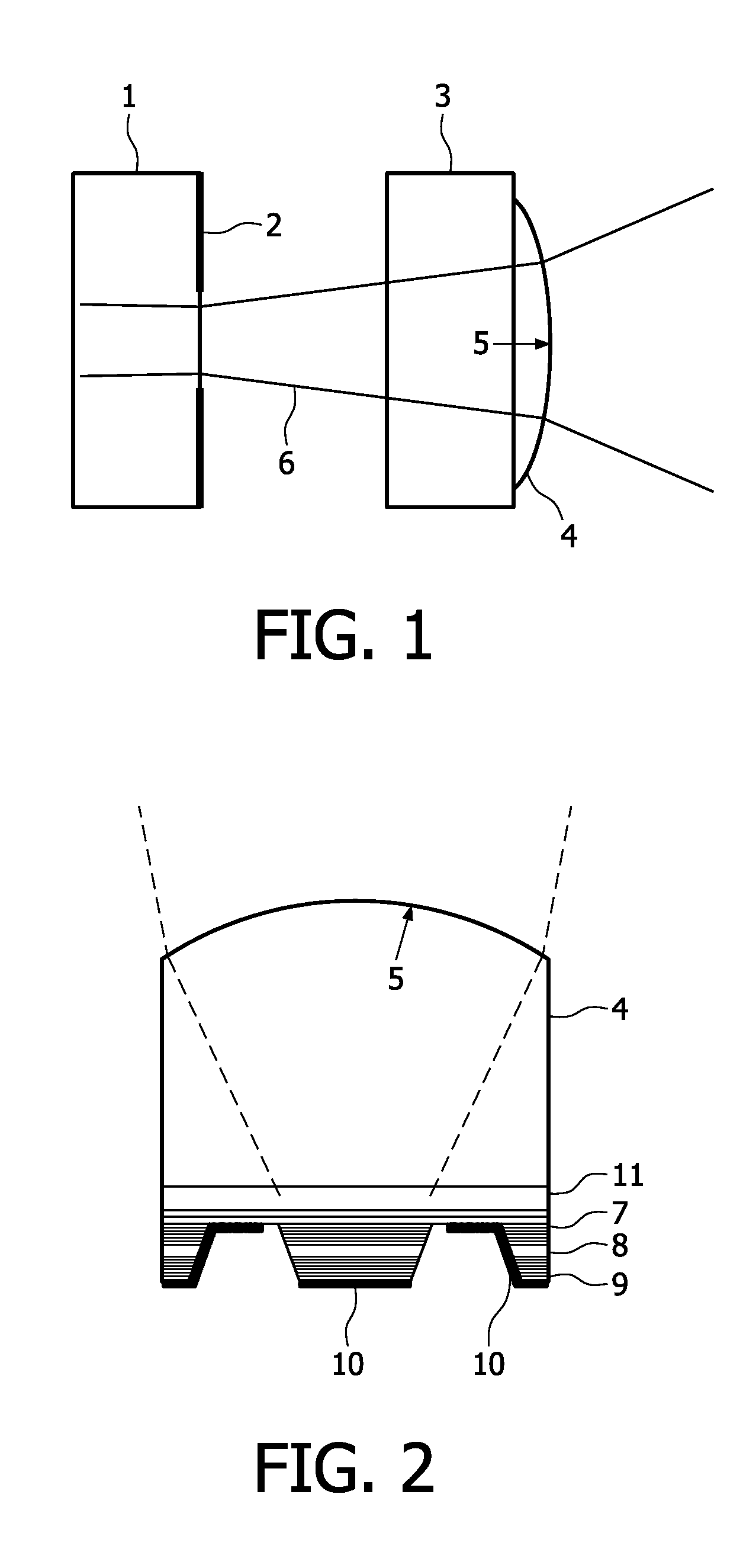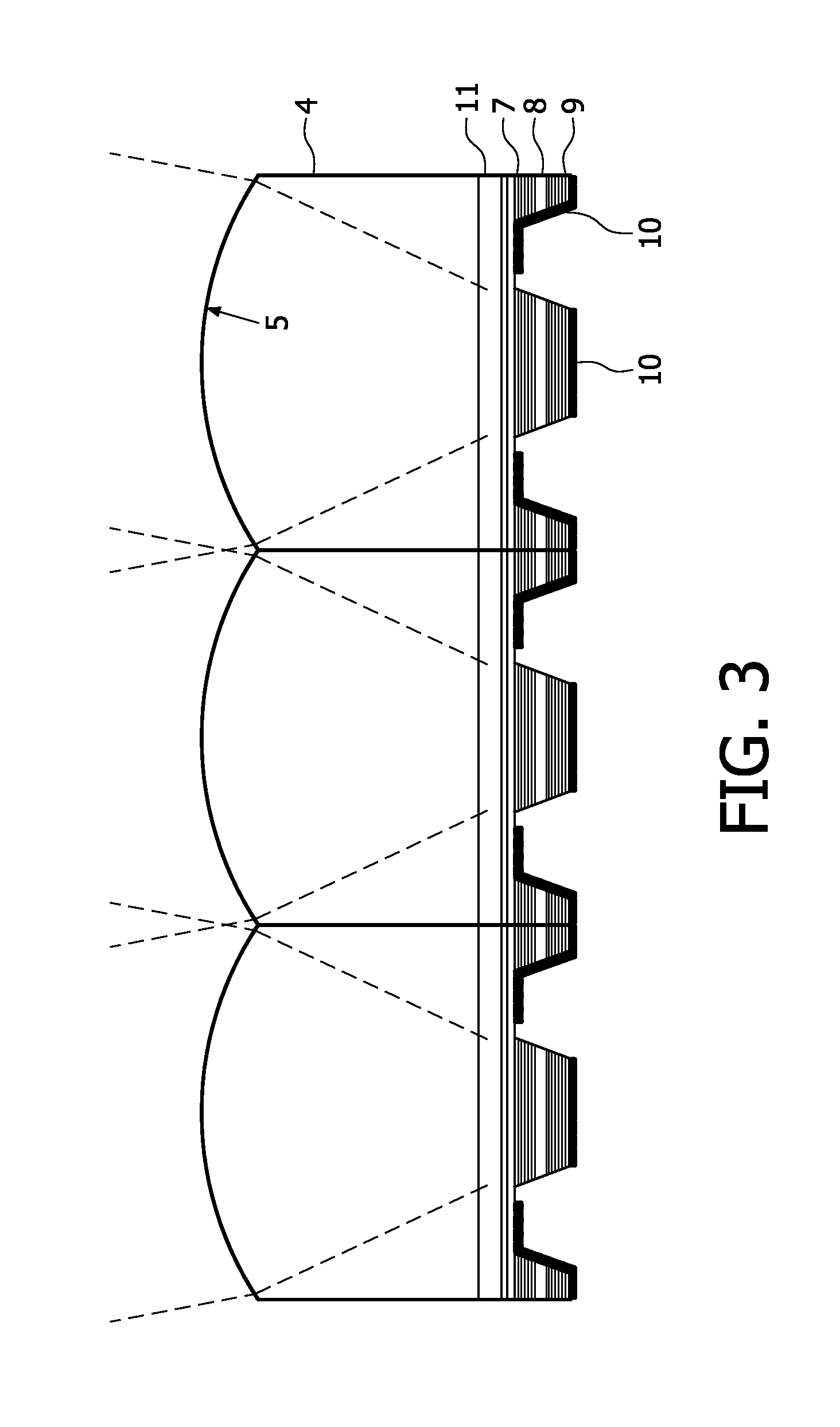High power vcsel with improved spatial mode
a technology of spatial mode and high power, which is applied in the direction of laser details, optical resonator shape and construction, printing, etc., can solve the problems of large-scale vcsels, which suffer from emission in higher-order spatial modes, are not very practical, and the complexity of the system is significantly increased, so as to achieve satisfying mode distribution and stability, and high power vcsel
- Summary
- Abstract
- Description
- Claims
- Application Information
AI Technical Summary
Benefits of technology
Problems solved by technology
Method used
Image
Examples
Embodiment Construction
FIG. 1 shows a schematic view of a first example of the proposed VCSEL device. In this embodiment the weak feedback is realized by a curved mirror placed apart from the VCSEL 1, which is only indicated schematically in FIG. 1. A confinement layer 2 on the upper DBR of VCSEL 1 forms an aperture for the emitted laser radiation, the laser beam 6 being indicated in the figure. The optical element forming the reflecting surface for feedback is a coated micro lens 4 in this example. The coating may be a stack of appropriate dielectric layers like Ta2O5 and SiO2 or similar materials. This micro lens 4 is attached to a glass block 3 having a thickness of 200 μm. The air gap between the VCSEL 1 and this glass block 3 is 3 mm. The micro lens is coated to have a reflectivity of the inner surface 5 of 30% for the laser radiation, such that 30% of the laser radiation emitted by the VCSEL 1 is fed back into the laser cavity. This improves and stabilizes the spatial mode profile inside of the VCSE...
PUM
 Login to View More
Login to View More Abstract
Description
Claims
Application Information
 Login to View More
Login to View More - R&D
- Intellectual Property
- Life Sciences
- Materials
- Tech Scout
- Unparalleled Data Quality
- Higher Quality Content
- 60% Fewer Hallucinations
Browse by: Latest US Patents, China's latest patents, Technical Efficacy Thesaurus, Application Domain, Technology Topic, Popular Technical Reports.
© 2025 PatSnap. All rights reserved.Legal|Privacy policy|Modern Slavery Act Transparency Statement|Sitemap|About US| Contact US: help@patsnap.com



